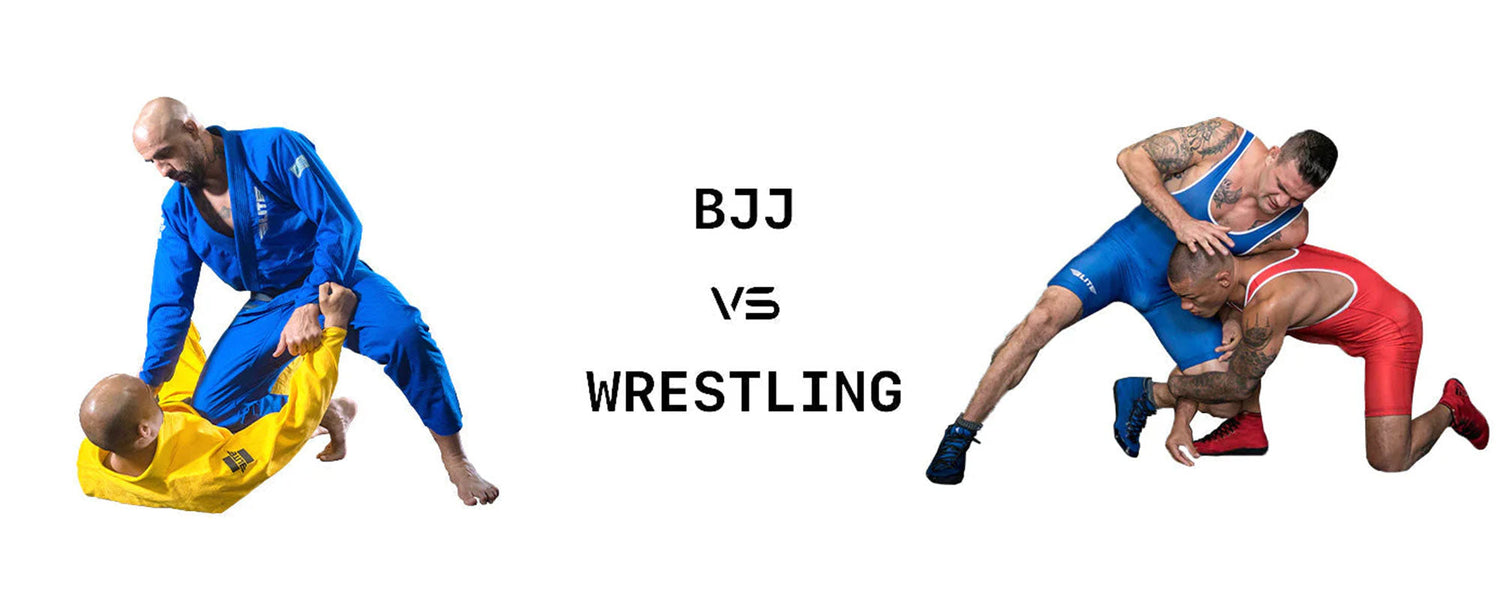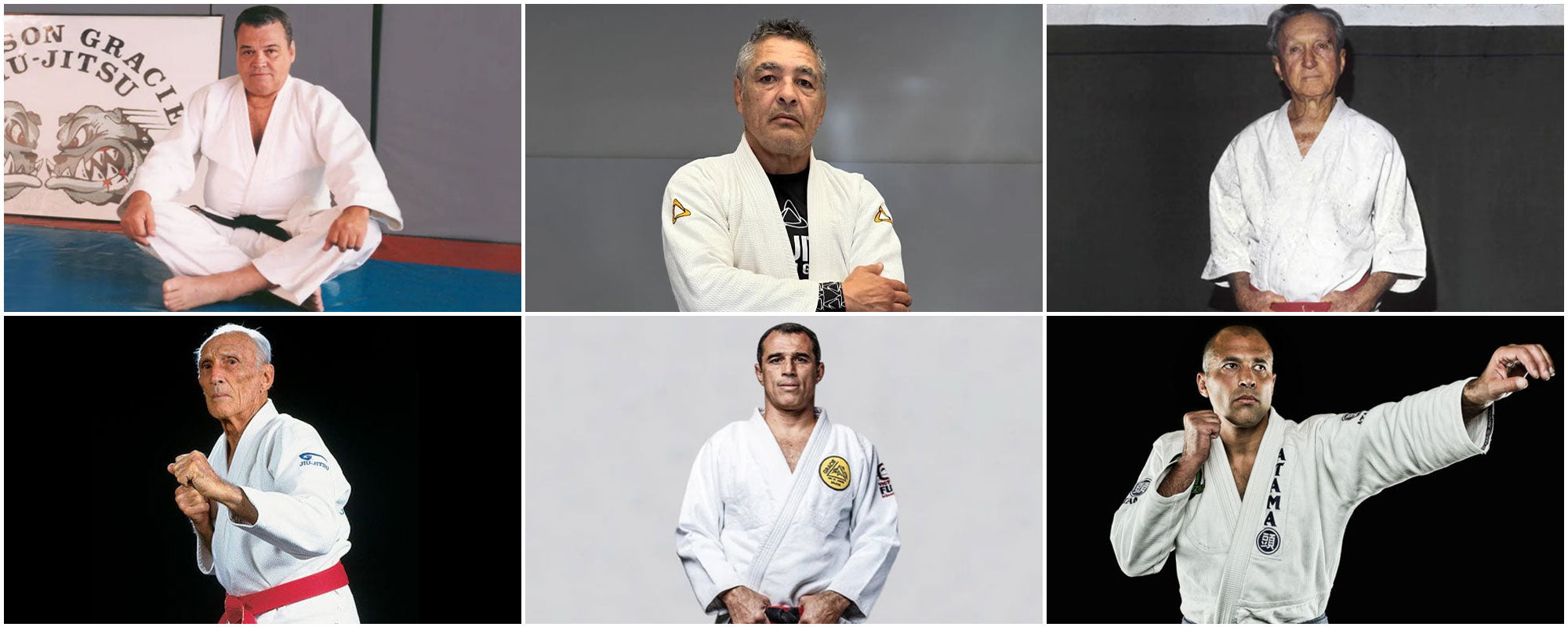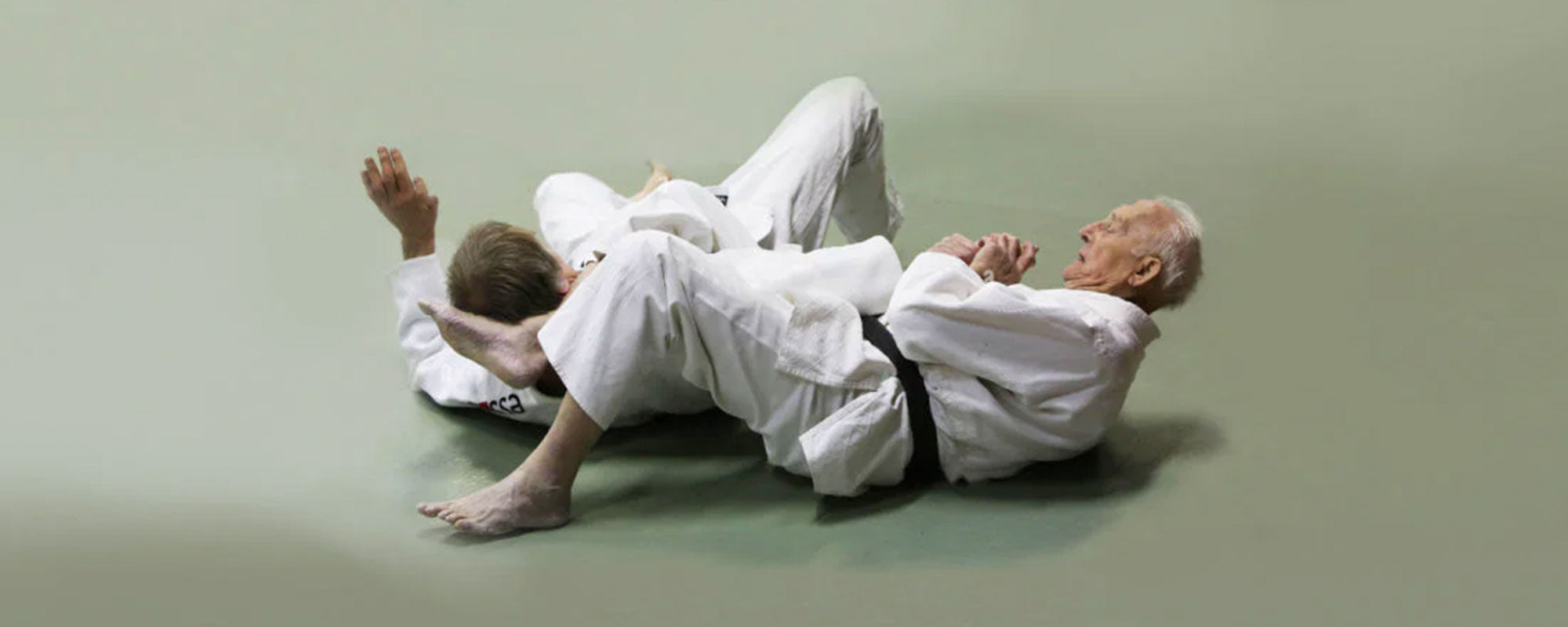Table of content
Submission wrestling or submission grappling is a hybrid of different grappling arts, including catch wrestling, judo, BJJ, No-GI BJJ, folk wrestling, and sambo. Therefore, BJJ is different from submission wrestling because the latter has its own ruleset and include no-GI. The following article entails some important reasons of why BJJ and submission wrestling are different.
1. Differences in Friction and Speed
Submission wrestling and BJJ differ in terms of friction and speed. The reason for this difference between them is the use of a gI. Submission wrestling does not require fighters to wear a gi, but BJJ is performed while having a gi on. The difference in friction and speed due to the grips. Grips are important to secure choke holds and to subdue the opponent on the ground.
In BJJ, the cloth of the gi provides grips that can be used to slow down your opponent while submission wrestling focuses more on maintaining a fast momentum. Matches in submission wrestling have less friction and the action usually happens fast.
In the stand-up game, the chokeholds utilized in Gi BJJ involve numerous judo-style tossing and submission strategies, while submission wrestling takedowns resemble those of conventional wrestling. Having places to grab your opponent is the most important factor when on the ground. While the BJJ ground game is purposeful and specialized, submission wrestling moves will quite often be speedier.
Also read: Top 10 Greatest Wrestlers of All Time
2. Fighting Styles
BJJ and submission wrestling differ in their fighting styles as well. BJJ allows fighters to compete and win on their backs but combat submission fighting does not. In submission wrestling, the top position is taken to control and pin an opponent. For instance, a triangle choke on the back is used in BJJ to choke the opponent from behind, taking the bottom position voluntarily. Meanwhile, wrestlers avoid going for the bottom position since they can lose a match from such a disadvantageous position.
Moreover, submission wrestling focuses on submissions, takedowns, clinching, and striking, while BJJ is a non-striking martial art and focuses on submission techniques on the ground. Twisting leg locks are allowed in submission wrestling but not in BJJ.
Furthermore, submission grappling is a No-GI technique that allows you to pull off different chokes, submission, and grips. Wrestlers learn to grip the wrists or pull the neck rather than grip the sleeves and collar.
3. Choking
As there is no requirement to wear a gi in submission wrestling, this is why there is more focus on lower body submissions rather than chokeholds. Loop chokes, cross collar chokes, barbo chokes, and baseball bat chokes are not permitted in submission wrestling. BJJ has an advantage over submission wrestling because it has a wide variety of chokeholds. However, heel hooks, calf slicers, kneebars figure-four foot locks, and twisting ankle locks are illegal in BJJ according to the rules by IBJJF, but ADCC does permit the use of these techniques.
It is evident that chokeholds used in Gi BJJ are effective in finishing a fight but there are also certain chokeholds like the guillotine, darce, anaconda, and north-south choke that can be adapted in submission grappling.
4. Outlawed Techniques
Initially, in BJJ, no holds (submissions) were illegal. But over time, 18 techniques were outlawed by the IBJJF at the white belt level and 10 techniques were prohibited at the black belt rank. Meanwhile, there are only two submission techniques in submission wrestling that are prohibited by the ADCC. These techniques include finger pulling and the full nelson.
5. Rest Factor
BJJ fighters are fortunate to get a short rest break, but in submission wrestling, there is no such reprieve. In a BJJ match, the fighters get to rest for 20 seconds to adjust their GI as per the referee’s direction. But in submission wrestling, the absence of a rest break makes submission wrestling more physically demanding.
6. Competitions
Submission wrestling and BJJ are not Olympic sports. The reason is that the International Olympic Committee does not permit derivative sports. But both martial arts have their own federations to organize competitions. Abu Dhabi Combat Club (ADCC) organizes submission wrestling world championships but BJJ is organized by the regulatory authority International Judo Federation (IJF) and International Brazilian Jiu-Jitsu Federation (IBJJF).
7. Clothing
The biggest difference between submission wrestling and BJJ is the use of a gI. A BJJ gi includes a heavy jacket, pants, and a belt. This uniform is made from tough material to make it more durable. The more durable the uniform is, the longer it will last and the more difficult it will be for your opponent to grab it. In submission wrestling, the wrestlers wear grappling shorts with or without a rash guard.
The grappling shorts have no pockets and are made from a stretchy and quick-drying material. They are specially built for jiu-jitsu as they have reinforced stitching and hemline finishes right at or above the knee. They do not slide off easily and provide flexibility on the ground.
A rash guard is a vest that a wrestler wears in No-GI grappling. It is made of spandex and polyester which protects the skin from scrapes and skin burns. This material absorbs sweat and causes a cooling effect on the body.
8. Point Scoring
Submission wrestling doesn’t use point scoring but BJJ does. In BJJ, fighters take advantage of the points scored by completing guard passes or submissions. If anyone wants a competitive edge over the opponents, a fighter can learn these rules to earn more points in a match.
Fighters are awarded points according to the following moves.
| Points | Moves |
|---|---|
| 4 | Rear mount |
| 2 | Takedown |
| 2 | Knee-on belly |
| 4 | Mount |
| 3 | Passing the guard |
9. Rules and Disqualification
BJJ has more rules and illegal holds than submission wrestling. Therefore, disqualification happens more often under IBJJF rules than under ADCC rules. Breaking a rule in BJJ will not always result in immediate disqualification, but slams, slaps, and fist fighting is considered illegal. And a fighter can face instant disqualification if he/she intentionally does one of these while the opponent is in the guard position or on their back. Slamming your opponent is a severe foul because it can paralyze your opponent, which is why slams are banned in IBJJF. But ADCC allows them as a means to escape from a hold.
10. Is Submission Wrestling Effective for Self-Defense?
No doubt! Submission wrestling is more effective than BJJ as a form of self-defense due to its No-GI properties but it can be dangerous to use in real fights. Normally, your opponent does not wear a gi in the street fight. So, the assaultee can easily get a win over the assailant by using submission wrestling tactics.
Usually, all real fights end up on the ground. BJJ is a ground-based martial art that teaches you how to dominate your opponent even when lying down. Moreover, BJJ is a non-striking martial art that minimizes harm to yourself and your opponent. Due to this, there is no serious danger when applying these techniques out of self-defense. On the other hand, there is a limited number of submission wrestling techniques that are appropriate for self-defense. This is due to the moves having limited applicability as a means of self-defense, sometimes being lethal in some cases.
11. Neck Workout
Submission wrestling requires wrestlers to focus on intense neck workouts to resist the pressure of neck grips. Initially, it is difficult for wrestlers to bear the soreness caused by a neck workout but gradually they develop stronger neck muscles that allow them to perform well on the mat. In comparison, BJJ involves a full-body workout that trains them to be able to stand out on the mat.
12. Dealing with Grips
As mentioned earlier, BJJ involves grabbing the gi to secure a hold but submission wrestling does not. These grips are beneficial for strong fingers but can sometimes cause fractures and cuts in the fingers due to trying to keep one’s grip on the gi. In submission grappling, the fingers are safer than in BJJ.
13. Rounds
In BJJ, there are usually two rounds in a match, accompanied by a third one that serves as a tie-breaker if needed. The length of the rounds is based on the rank of the fighters. Submissions, knockouts, or disqualification are required to end the match. Rounds are judged based on the 10-point scoring system. But in submission wrestling, there is only a single 12-minute round with no breaks that follows a submission-only format. If there is no submission within the 12 minutes of the round, then the match will be considered a draw.
14. Base for MMA
BJJ is an effective martial art to provide a base for MMA but BJJ fighters still have to work on refining their striking skills and learning takedowns from wrestling. On the other hand, a submission wrestler is already equipped with the effective techniques from BJJ, Greco-Roman wrestling, and judo. That is why submission wrestling provides the best base for fighters to compete in MMA.
15. Belt System
BJJ uses a traditional belt system to signify rank and progress towards mastery in the sport while submission wrestling does not. In BJJ, beginners start with a white belt and masters end up with a high-level black belt. Every fighter has to struggle for two years to achieve any rank in the belt system.

| Belt Rank System in BJJ | |
|---|---|
| White Belt | Given to beginners. |
| Blue Belt | Given to a person whose rank is just above the white belt. |
| Purple Belt |
Given for intermediate rank. |
| Brown Belt |
Given to a person who has achieved the second-highest rank. |
| Black Belt |
Given to a person who has achieved the highest rank. |
| Red/Black Belt or coral belt | Given to a person who has achieved the seventh degree black belt. |
| Red/White Belt | Given to a person who has achieved the eighth degree black belt. |
| Red Belt | Given to a person who has achieved the ninth/tenth degree black belt. |

16. Origin and development
The development of submission wrestling was inspired by Vale Tudo, an early form of MMA. On the other hand, BJJ was developed from Kodokan judo which evolved as a new style of martial arts using elements of both jiu-jitsu and judo. This led to BJJ being a non-striking martial art and submission wrestling being focused on striking.
17. Focus
The focus of submission wrestling is on takedowns and stand-up grappling due to having roots in freestyle and Greco-Roman wrestling. Meanwhile, BJJ focuses more on ground fighting.
Moreover, in BJJ, the fighter maintains control over his opponent and never gives up control when attempting a submission. In contrast, the submission wrestler attempts a more aggressive submission even if he/she has to give up control over the opponent.













Leave a comment
This site is protected by hCaptcha and the hCaptcha Privacy Policy and Terms of Service apply.